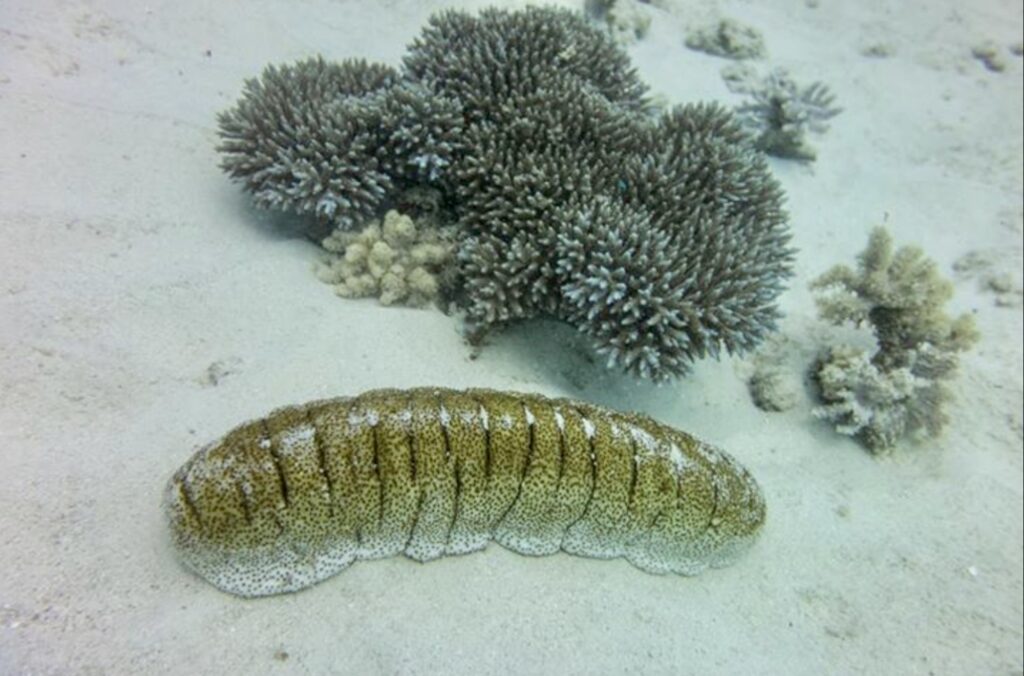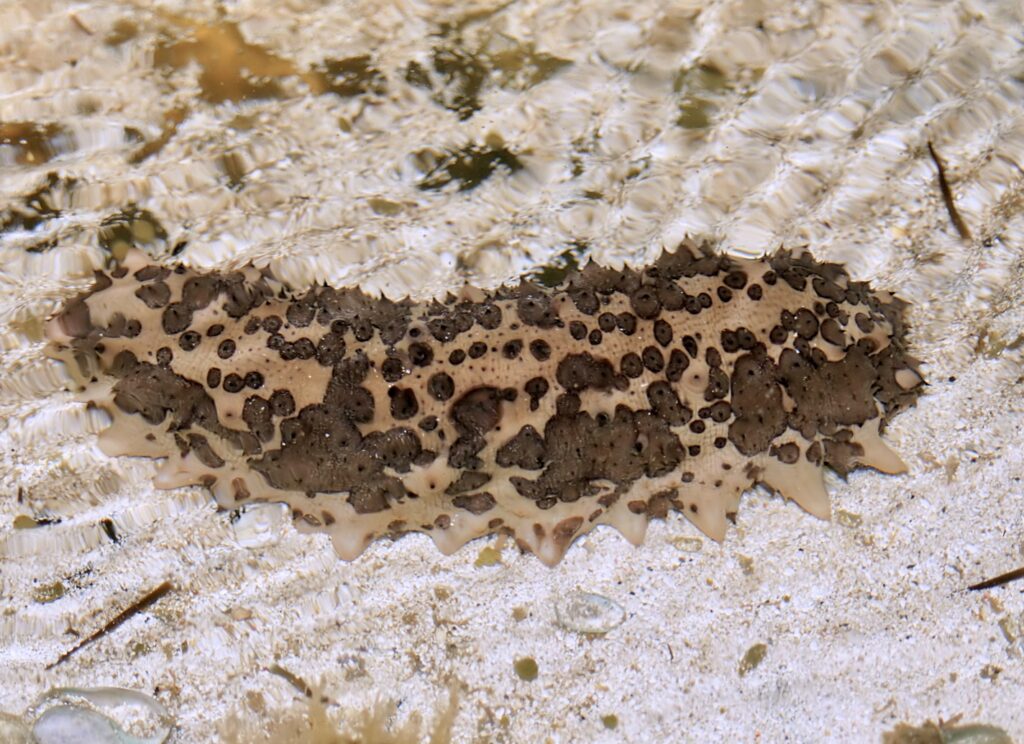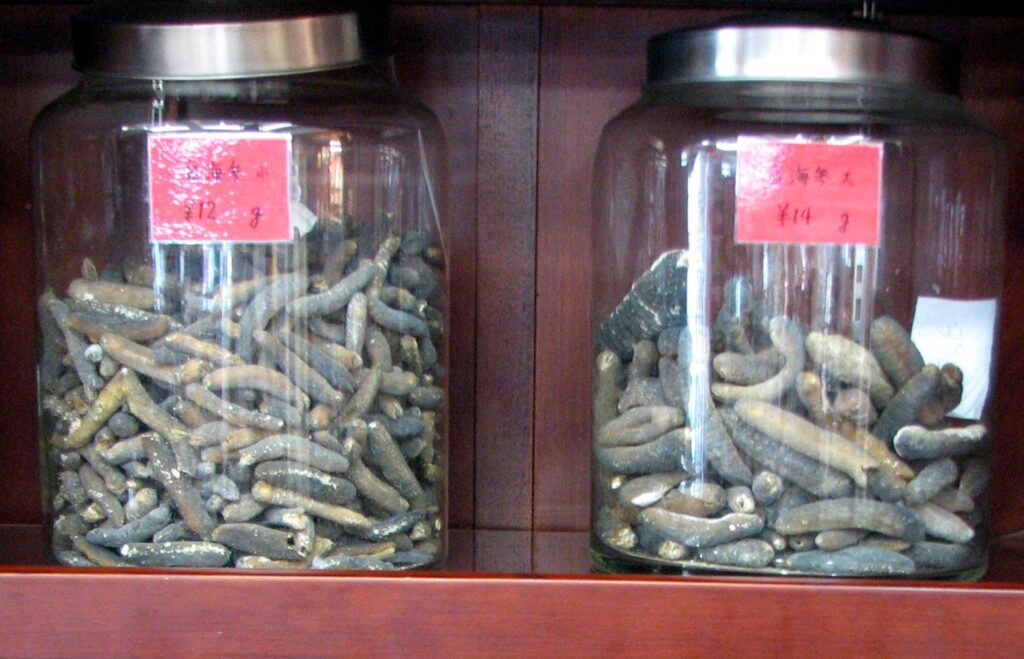By Henrylito D. Tacio

The Philippines, which is composed of more than 7,000 islands, is considered the “center of the center” of aquatic biodiversity. “Its central region, from Luzon to Mindanao, has more species per unit than any other place on the planet,” wrote Heloise Garry of earth.org. “It is home to a unique plethora of seagrass, invertebrates, seaweeds, and marine mammals.”
As an archipelago, the Philippines is blessed with a high diversity of sea cucumbers which inhabit its wide seagrass beds, soft bottom areas, and reefs. Sea cucumbers are marine invertebrates with the shape of the vegetable fruit that they are named after.
The country is home to about 200 species of sea cucumbers, of which 40 species are commercially important.
Although they are distributed throughout the country, most of them can be found off the coastal waters of Zamboanga City; Zamboanga del Sur; Zamboanga del Norte; Basilan Province; Jolo, Sulu; South Cotabato; Surigao del Norte; Villareal and Catbalogan, Samar; Negros Occidental; Cebu; Calatagan, Bangas; Polilio Island, Quezon; Masinloc, Zambales; San Vicente, Cagayan; San Fernando, La Union; Bolinao, Bani and Alaminos, Pangasinan.
Sea cucumbers may be weird marine creatures that look like they are from outer space but to some people, they are delectable.
Across Asia, sea cucumbers – which are echinoderms just like starfish and sea urchins – have long been a staple in peoples’ diets, mainly in soups, stews, and stir-fries. They are highly nutritious; they are described as “an ideal tonic food” as they provide more protein and less fat than most foods. “Like tofu, it is flavorless but absorbs the flavors of its surrounding seasonings and foods,” wrote an epicurean.
Generally, sea cucumbers are sold as trepang, which is easier to store and handle than the fresh product. They are valued as an exotic delicacy and a flavorful condiment for soups, noodles, and other dishes.
“The country has been a major exporter of the processed trepang for the last several centuries and the trade has been responsible for the prosperity of the Sulu Sultanate in southern Philippines during the 18th and 19th centuries,” said a document published by the UN Food and Agriculture Organization (FAO).
In other parts of the country, the harvesting and processing of sea cucumbers has been a source of income for many Filipino families. As Naga, the publication of the Kuala Lumpur-based WorldFish Center, reported in 1987: “The steady demand for sea cucumbers from other countries has made sea cucumber harvesting an attractive source of income for many Filipinos. In many islands and coastal villages, the income derived from it constitutes a significant portion of a family’s livelihood.”
Sea cucumbers are well-known as food and are highly recognized for their ecological and medicinal values. “They are considered to be of high value for their big demand in local and foreign markets as seafood items and source of pharmaceuticals,” wrote Dr. Rafael D. Guerrero III in his monthly column, “Straight from the Farm.”
Aside from food, there’s also an emerging market for the use of sea cucumbers in the pharmaceutical and cosmetic industries. Common medicinal uses of sea cucumber in China include treating: weakness, impotence, debility of the aged, constipation due to intestinal dryness, and frequent urination.
As demand continues to escalate, the supply dwindles – to the extent that their population is now in jeopardy. In fact, the Philippines has been dislodged as the top producer; it ranks now as the world’s eighth sea cucumber producer with an annual production of less than 900 tons.
The Laguna-based Philippine Council for Agriculture, Aquatic and Natural Resources Research and Development (PCAARRD) traced the dismal production to unregulated harvesting and trade. “The bulk of Philippine sea cucumber products is undersized lower-value species, poorly processed and lowly priced,” it said.
“With overfishing, there has been a decline in the populations of sea cucumbers in our coastal waters where they dwell in the bottom of seagrass beds and coral reefs feeding on organic matter,” wrote Dr. Guerrero, who was former director of the defunct Philippine Council for Aquatic and Marine Research and Development.
The overharvesting of sea cucumbers is due to its big demand and high price abroad. “A kilo of dried sea cucumbers can sell as much as P4,500 in the local market and P12,000 in the export market,” Dr. Guerrero said.
Marine experts described this problem as “a pantropic crisis.”
“A high value species, sea cucumber is easily harvested from coastal or inshore habitats and its stocks have been heavily depleted due to unregulated fishing activities and habitat destruction,” wrote Maria Elena M. Garces in an article she wrote for the publication of Bureau of Agricultural Research, the BAR R&D Digest.
So much so that the Bureau of Fisheries and Aquatic Resources (BFAR) – a line agency of the Department of Agriculture – is banning the catching and trading of three species of sea cucumbers, namely: Holothuria fuscogilva, H. nobilis, and H. whitmaei.
Philippine Daily Inquirer’s Yolanda Sotelo reported that the three species were included in the list of the Convention on International Trade in Endangered Species of Wild Fauna and Flora (CITES).
The ban, according to BFAR, would include “fishing, taking, catching, gathering, selling, purchasing, processing, transporting, exporting, forwarding or shipping out.”
The banning is an upright move and a good start. All over the world, sea cucumber stocks are under intense fishing pressure, according to a recent FAO report. Most high value commercial species have been depleted.
In Asia and the Pacific region, the most sought-after species are largely depleted. The region generates some 20,000 to 40,000 tons per year, which are exported to China and other Asian markets.
“The fast pace of development of sea cucumber fisheries to supply growing international demand is placing most fisheries and many sea cucumber species at risk,” pointed out the FAO report, Sea Cucumbers: A Global Review of Fisheries and Trade.
But there is good news. The PCAARRD launched a program that would restore the viable economic activity. In 2016, it established a sustainable and globally competitive sea cucumber industry which provides equitable economic benefits to various stakeholders and maintains the productivity and biodiversity of the sea cucumber industry in the country.
Two approaches were developed to attain the goal. The first approach was to increase production of premium-grade size sea cucumbers through public-private partnership coupled with grow-out production systems engaging commercial and local fishers with the support of the local government.
Through this approach, the country is now able to culture sandfish, Holothuria scabra (a species of sea cucumber) in the hatchery. Low-cost ocean nursery systems were developed to reduce the cost and diversity systems for juvenile production.
“The integration of sandfish culture technology to existing marine aquaculture facilities and the availability of low-cost nursery systems opened opportunities for its grow-out culture,” PCAARRD reports. “Sandfish culture may potentially reduce the harvesting pressure of the wild sandfish population and allow them to rest and recuperate.”
The second approach was to produce high quality trepang. In fact, the Philippines is now able to produce high-quality trepang. The technology package for postharvest processing was developed; it produces Class A premium grade trepang with reduced microbial content, improved shelf life and no foul odor.
“The postharvest processing line is composed of a degutting table, mechanical cleaner and hybrid dryer that is being tested in coastal communities,” the PCAARRD says. Initial profitability analysis has shown that using the hybrid dryer alone, gross income from dried sea cucumber could increase by 77% due to improvements in quality of the final product.
Growing sea cucumber on sea beds is referred to as “sea ranching.” This has been found “to be effective in establishing spawning populations of sea cucumbers and providing a supplemental source of income to small fishers.”
In her article, Garces reported that through the introduced aquaculture and stocking technologies, communities can be motivated into conserving wild breeding stocks while generating income and speeding stock recovery.
“Successful hatchery and ocean nursery production of juveniles have been used to restock depleted areas,” she wrote, adding that “breeding populations can be maintained in sea ranch areas and reserves to rejuvenate larval supply to nearby fishing grounds.”
Another recent development is that sea cucumbers can be co-cultured with sea urchins and rabbitfish, as proven by small-scale fishers in Bolinao, Pangasinan. “Sea cucumbers cultured with free-ranged sea urchins and rabbitfish have higher growth rates than with caged sea urchins,” Garces reported.
She said that the removal of the sea urchin cages can reduce the material cost when scaling the culture system. “The integration of sea urchins and rabbitfish as secondary species in the rearing of sea cucumber can increase the sources of food and livelihood of small-scale fishers.”
Garces said that integration is better than rearing sea cucumbers alone. “The innovation on the integrated culture systems with sea cucumber has the potential to produce larger sizes of sea cucumber and could create additional sources of income to small fisher households,” she wrote.
Aside from trepang, the harvested product is also known as namako, beche-de-mer, or balate.
In some parts of Europe, whole bêche-de-mer can be stuffed with a filling of pork, corn starch, and chopped fried fish. Cooked fresh and quickly on a hot griddle, espardenyes are served with olive, sea salt and a squeeze of lemon in Spain. They can also be prepared as salads and eaten fresh minus the internal organs.
To some people, sea cucumbers are more than just food. In fact, there are people who believe sea animals possess some aphrodisiac powers. The reason for this belief is the peculiar reaction of the creature on being kneaded or disturbed slightly with fingers. It swells and stiffens, and a jet of water is released from one end. This behavior is similar to the erection and subsequent ejaculation of the male sexual organ.
Meanwhile, people in Palau use the sea cucumber to protect their feet when walking in the reef. They squeeze the sea cucumber until it squirts out sticky threads, which they put on their feet. Even though this practice may sound harsh, the sea cucumber returns to the reef unharmed. – ###


